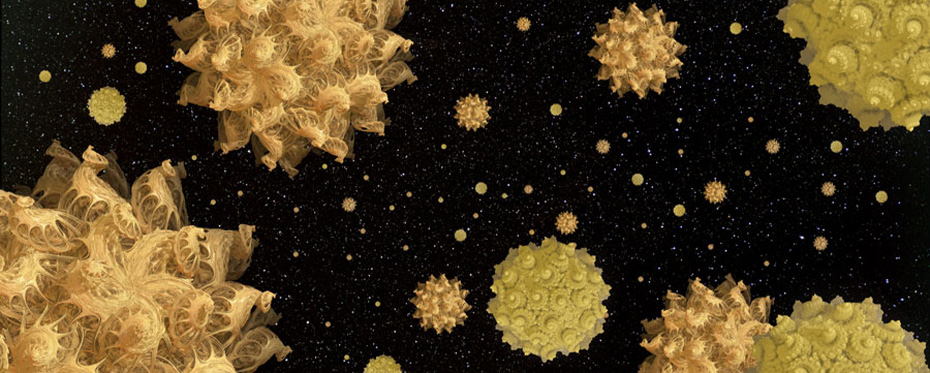Tag: DNA
Evolutionary theory: Debating the origins of our DNA

For over a decade, Mr Shaojie Deng of Chongqing Municipal Bureau of Planning and Natural Resources, China, has been formulating and more recently presenting his new evolutionary theory to the academic world. Over time his thought processes too have evolved with his most recent manuscript centring around the stable complex model as an explanation for the evolution of enzymes and […]
Read More… from Evolutionary theory: Debating the origins of our DNA
Cut of the crop: High-yields of non-browning eggplant via genome editing

Eggplant is cultivated globally – but its production is fraught with issues affecting the crop’s overall yield and post-harvest properties. The fruit can be less appealing when damaged or cut due to the enzymatic browning of tissues. Cultivating high-yielding yet non-browning eggplants is an area of ongoing research at the Khalifa Center for Genetic Engineering and Biotechnology, UAE. The researchers […]
Read More… from Cut of the crop: High-yields of non-browning eggplant via genome editing
The flipside of DNA: Flipons and alternative nucleic acid structures

DNA sequences called flipons can adopt alternative DNA structures. New research suggests that they have important biological roles. In a quest to further unravel the mystery of these dynamic DNA elements, Dr Alan Herbert, InsideOutBio Inc, USA, and colleagues have spent years conducting experiments at the cutting edge of genomic and molecular science. Now, they demonstrate that by targeting flipons, […]
Read More… from The flipside of DNA: Flipons and alternative nucleic acid structures
X-ray ptychography: Seeing chromosome abnormalities in a new light

Chromosome abnormalities have profound health consequences including trisomy and cancer. Karyotyping (the visualisation of the complete set of chromosomes by shape and size) is an initial step towards identification of chromosome aberrations and disease. Other chromosome imaging methods such as fluorescent in situ hybridisation (FISH) rely on sample preparation or fluorescent markers, which may or may not alter the sample. […]
Read More… from X-ray ptychography: Seeing chromosome abnormalities in a new light
Pure and sound: Isolating the finest RNA from jute

Jute is an important crop grown for human usage of its fibres in everyday materials. There has been an increasing interest to study the behaviour of this crop in the field, to maximise its yield. Detailed studies of this plant at the molecular level involves several techniques that require isolation of cellular material such as nucleic acids (DNA and RNA) […]
Read More… from Pure and sound: Isolating the finest RNA from jute
Housekeeping rules: Why reference genes matter in jute plants

Jute is a commercially grown fibre plant that provides a natural resource for modern day fibre usage. With the lack of diversity in jute plants, the recent sequencing of the jute genome offers a wide range of gene targets for crop breeding. In parallel, the use of quantitative approaches to study the expression pattern of jute genes has taken precedent. […]
Read More… from Housekeeping rules: Why reference genes matter in jute plants
The intricate world of the centrosome

Dr Ryoko Kuriyama is a Professor at the University of Minnesota, Twin Cities. Alongside Dr Cody Fisher, she studies mammalian centrosomes, composite organelles responsible for the segregation of chromosomes during mammalian somatic cell division. Together, Kuriyama and Fisher, with the help of the United States National Science Foundation, investigate the detailed complexity of centrosome maturation, identifying the pericentriolar material protein […]
How new RNA genes are born

The study of gene birth and evolution focuses on the identification of ancestral genetic sequences, highly conserved during evolution, that can serve as a foundation for gene development. Nicholas Delihas, Professor Emeritus at the Renaissance School of Medicine at Stony Brook University, New York, has identified one such ancestral element and presented data and a model to show how new […]
High-throughput fluorescent sequencing of biomolecules within their cellular environment

Understanding the molecular diversity within healthy or diseased tissues is crucial for the diagnosis and treatment of diseases and for gaining a better understanding of fundamental biological processes. Biological tissues contain thousands of different molecules, yet conventional staining looks at only a few at a time because it relies on a limited number of dyes. Prof George Church and Dr […]
Directed Panspermia: Synthetic DNA in bioforming planets

As our technological advancements continue, scientists are beginning to turn what was science fiction into reality. Concepts such as terraforming and travel between stars are becoming more achievable, giving life to the dream that one day we might colonise other planets. Directed panspermia is one method of altering a hostile, uninhabited planet to a more Earth-like environment, and Cork Institute […]
Read More… from Directed Panspermia: Synthetic DNA in bioforming planets